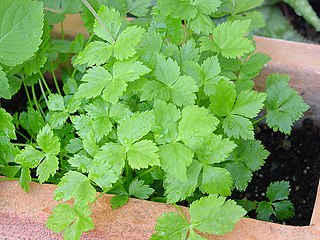
Oryx is a genus consisting of four large antelope species called oryxes. Their fur is pale with contrasting dark markings in the face and on the legs, and their long horns are almost straight. The exception is the scimitar oryx, which lacks dark markings on the legs, only has faint dark markings on the head, has an ochre neck, and horns that are clearly decurved.

Bombax is a genus of mainly tropical trees in the mallow family. They are native to western Africa, the Indian subcontinent, Southeast Asia, and the subtropical regions of East Asia and northern Australia. It is distinguished from the genus Ceiba, which has whiter flowers.

The Masai giraffe, also spelled Maasai giraffe, also called Kilimanjaro giraffe, is the largest subspecies of giraffe. It is native to East Africa. The Masai giraffe can be found in central and southern Kenya and in Tanzania. It has distinctive, irregular, jagged, star-like blotches that extend to the hooves. A median forehead lump is usually present in bulls.

The conservation status of a group of organisms indicates whether the group still exists and how likely the group is to become extinct in the near future. Many factors are taken into account when assessing conservation status: not simply the number of individuals remaining, but the overall increase or decrease in the population over time, breeding success rates, and known threats. Various systems of conservation status exist and are in use at international, multi-country, national and local levels as well as for consumer use.

Cryptotaenia, or honewort, is a genus of herbaceous perennial plants, native to North America, Africa, and eastern Asia, growing wild in moist, shady places.

Juniperus procera is a coniferous tree native to mountainous areas in Africa and the Arabian Peninsula. It is a characteristic tree of the Afromontane flora.
Cynometra filifera is a species of plant in the family Fabaceae. It is found only in Tanzania.
Cynometra longipedicellata is a species of plant in the family Fabaceae. It is found only in Tanzania.
Erythrina schliebenii is a species of legume in the family Fabaceae. It is found only in Tanzania. The species is named for German collector and botanist Hans-Joachim Schlieben.
Guibourtia schliebenii is a species of plant in the family Fabaceae. It is found in Mozambique and Tanzania.
Rhodognaphalon brevicuspe is a species of flowering plant in the family Malvaceae. It is found in Cameroon, Republic of the Congo, Democratic Republic of the Congo, Ivory Coast, Gabon, Ghana, Nigeria, and Sierra Leone. It is threatened by habitat loss.
Alsodeiopsis schumannii is a species of plant in the Icacinaceae family. It is endemic to Tanzania, specifically the East Usambara, the Uluguru Mountains, and the Southern Highlands.
Ficus faulkneriana is a species of strangler fig in the family Moraceae native to Africa.
Lovoa swynnertonii, also called brown mahogany or Kilimanjaro mahogany, is a species of plant in the family Meliaceae. It is found in the Democratic Republic of the Congo, Kenya, Mozambique, Tanzania, Uganda, and Zimbabwe. It is threatened by habitat loss. Plantations have been unsuccessful because of infestation by the mahogany shoot borer Hypsipyla.

Lovoa trichilioides, also called African walnut, Congowood, dibetou or tigerwood, is a species of plant in the family Meliaceae. It is found in Angola, Cameroon, the Republic of the Congo, the Democratic Republic of the Congo, Ivory Coast, Gabon, Ghana, Liberia, Nigeria, Sierra Leone, Tanzania, and Uganda. It is threatened by habitat loss. Germination success is somewhat limited by short-lived seeds which are heavily predated. Exploitation rates are high. It is one of the two principal timber species in Congo.
Mesogyne insignis is a species of plant in the family Moraceae. It is found in São Tomé and Príncipe and Tanzania.
Warburgia stuhlmannii is a species of plant in the family Canellaceae. The genus is named after Dr Otto Warburg, botanist and lecturer in Berlin. and the species after Franz Stuhlmann, also a renowned botanist who directed the Amani Research Institute and its botanical garden in German East Africa. It is a rare, small, evergreen tree, reaching heights from 12 to 24 metres, and has glossy leaves. It is found in the coastal woodlands and forests of Kenya and Tanzania and is threatened by habitat loss. It is known as mkaa in Swahili.
The Flora of Tropical East Africa (FTEA) is a catalogue of all 12,104 known wild plant species in Uganda, Kenya, and Tanzania. The project began in 1948 and was finally completed in September 2012. Approximately 1,500 new plant species were described, by 135 botanists from 21 countries.
Agelanthus rondensis is a species of hemiparasitic plant in the family Loranthaceae. It is endemic to Tanzania.
Agelanthus atrocoronatus is a species of hemiparasitic plant in the family Loranthaceae. It is endemic to Tanzania. It is known only from the Mufindi Plateau in Tanzania, and was last collected in the 1980s.








